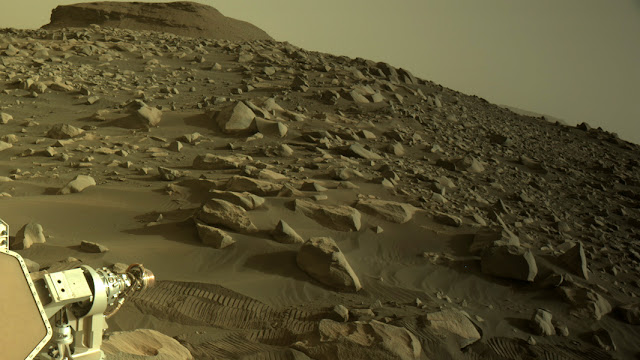You're surely aware that NASA released the highest-resolution image of Mars ever in March 2020. The view depicted a terrain similar to a desert canyon on Earth, but features such as a three-mile-wide impact crater serve as reminders of how drastically different Mars is.
Now. What you may not realize is that Mastcam is a 2MP camera capable of capturing photographs no larger than 1600 X 1200 pixels. Despite being one of the most amazing human achievements of the last decade and costing taxpayers roughly $2.5 billion, the Mars rover Curiosity employs a 2-megapixel sensor in its main camera array. That detail may have surprised anyone familiar with digital imaging because it is very low, especially given that today's entry-level digicams have at least 10 megapixels and "premium" versions have upwards of 40.
TrueSense Imaging's KAI-2020 sensor was used on Curiosity. It has an interline CCD and shoots at 16001200. (as opposed to full-frame CCD, frame transfer CCD, or CMOS). Interline sensors are distinguished by small pixels, the use of microlenses to assist the pixels, quick imaging times, and the use of an electric shutter rather than a mechanical shutter.
So why limit yourself to just 2MP? The decision was taken for a variety of reasons, some of which may not be immediately apparent. The first and most important consideration is the distance across which data must be transferred. The rover transmits data to two satellites orbiting Mars, which relay it back to Earth. This data stream is fairly modest, at around 256 megabits (32MB) per day. And photos aren't the only thing Curiosity sends back - there are a slew of other records and measurements that must be sent as well.
The following barrier to more contemporary equipment is simply logistics: Curiosity has been in development since 2004. A 2-megapixel sensor was cutting-edge at the time, but it has clearly been surpassed since then. However, design and testing take time, and components cannot be swapped out as easily as they can on a computer. Parts must be able to withstand the rigours of the Martian environment and be able to take time.
Other logistical reasons included the fact that the 2MP sensor is used in four cameras on the MSL, rather than just one. The Mars Hand Lens Imager (MAHLI), Mars Descent Imager (MARDI), and both MastCams are among them. NASA was able to keep certification time to a minimum by using the same sensor and without having to study the ins and outs of each sensor (such as the effect of radiation on the individual pixels).
The fourth and most practical argument for using a 2MP sensor is because nothing on Mars moves. As a result, several photos can be simply stitched together to form panoramas. This has the same effect as a higher resolution camera but without any of the negatives.
One advantage of the KAI-2020 is that it can record video. If necessary, the processor can support 720p HD (1280720) and up to 6 frames per second.




